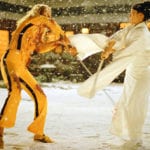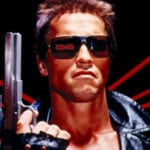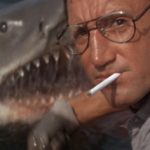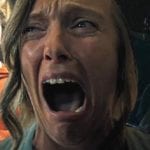 Movies and TV
Movies and TV  Movies and TV
Movies and TV  Humans
Humans 10 Times Scientists Were Absolutely Sure… and Absolutely Wrong
 Our World
Our World 10 Pivotal Moments for Life on Earth
 Movies and TV
Movies and TV 10 Most Realistic Medical TV Shows of All Time
 Creepy
Creepy 10 Eerie & Mysterious Ghosts of the Pacific Coast
 Weird Stuff
Weird Stuff 10 Typos That Accidentally Changed History
 History
History 10 Times Trickery Won Battles
 Technology
Technology 10 Awesome Upgrades to Common Household Items
 Misconceptions
Misconceptions 10 Hilarious (and Totally Wrong) Misconceptions About Childbirth
 Weird Stuff
Weird Stuff 10 Warning Labels That Exist Because Someone Actually Tried It
 Movies and TV
Movies and TV 10 Zombie Movies That Will Actually Terrify You
 Humans
Humans 10 Times Scientists Were Absolutely Sure… and Absolutely Wrong
 Our World
Our World 10 Pivotal Moments for Life on Earth
Who's Behind Listverse?

Jamie Frater
Head Editor
Jamie founded Listverse due to an insatiable desire to share fascinating, obscure, and bizarre facts. He has been a guest speaker on numerous national radio and television stations and is a five time published author.
More About Us Movies and TV
Movies and TV 10 Most Realistic Medical TV Shows of All Time
 Creepy
Creepy 10 Eerie & Mysterious Ghosts of the Pacific Coast
 Weird Stuff
Weird Stuff 10 Typos That Accidentally Changed History
 History
History 10 Times Trickery Won Battles
 Technology
Technology 10 Awesome Upgrades to Common Household Items
 Misconceptions
Misconceptions 10 Hilarious (and Totally Wrong) Misconceptions About Childbirth
 Weird Stuff
Weird Stuff 10 Warning Labels That Exist Because Someone Actually Tried It
Top 10 Behind The Scenes Tales About Kubrick Movies
Stanley Kubrick remains one of the greatest directors of all time. Kubrick, an uncompromising perfectionist, would often make the cast and crew endure hours of reshoots. The filmmaker once made the legendary actor Adolphe Menjou perform 17 different takes of a single scene. Manjou exploded in a fit of rage, insulting Kubrick’s parentage and directorial abilities. Once the diatribe was over, Kubrick calmly responded, “All right, let’s try the scene once more.”
Kubrick shied away from the limelight. Despising Hollywood culture, he retreated to the English countryside in 1978. Despite this, American studios continued funding his ambitious projects. Critics lauded the New Yorker’s films not only for their technical accomplishment and choreography but also their unflinching vision. From his comedic take on thermonuclear war to a tale about a spaceship computer that tries to kill its human crewmates, Kubrick’s films were as varied as they were sinister. He particularly enjoyed exploring the darker side of humanity, something that stemmed from his misanthropic outlook on the world.
What went on behind the camera was often just as interesting as the films themselves. So, without further ado, let’s take a look at just 10 behind-the-scenes facts about the late director’s impressive filmography.
10 Crazy Things Stanley Kubrick Did To Film ‘The Shining’
10 The Scene that Scratched a Cornea
A Clockwork Orange follows the depraved antics of Alex DeLarge and his gang of “droogs.” Alex is eventually detained and, at the behest of the Ministry of the Interior, undergoes rehabilitation. During one of the film’s most iconic scenes, the delinquent is strapped to a chair with his eyes pinned open. A psychiatrist then performs the Ludovico Technique, a fictional practice in which the subject is forced to view ultra-violent imagery until they become physically repulsed.
Kubrick pressured Malcolm McDowell, the actor who played Alex, to have eyelid clamps fitted for the scene. Although McDowell protested, Kubrick eventually got his way. An eye doctor was ushered into the studio to anesthetize the actor’s eyes and apply the clamps. But the metal hooks would slip from McDowell’s eyelids and scratch his corneas. The Brit only knew the true extend of the damage after the anesthetic wore off. “I was in so much pain I was banging my head against a wall,” he explained.
McDowell asked Kubrick for 2.5 percent of the film’s box office revenue. Kubrick allegedly told the star that Warner Brothers had denied the request. Only later did he discover the truth: “[W]hen I was invited to meet the studio heads, they said: ‘You’re going to be a very rich young man on the 2.5% we gave Stanley for you.’ I knew he would never pay me.”
9 The Shining Disturbed Shelley Duvall
Kubrick is notorious for pushing actors to their breaking point, demanding dozens of reshoots to capture the perfect moment. One scene in The Shining, in which young Danny learns of his ability to communicate telepathically, entered the Guinness World Records for the highest number of retakes for a scene with dialogue. It received a staggering 148 reshoots.
It is fair to say that Shelley Duvall fared worse, though. Duvall played Wendy Torrence, a beleaguered housewife who gets chased around the Overlook Hotel by her own mentally disturbed husband. During one scene, Wendy attempts to fend off her partner with a baseball bat. She cries hysterically, swinging the bat towards his maniacal face. The emotion portrayed in this scene was very real, stemming from Kubrick’s insistence on performing reshoot after reshoot. According to cameraman Garrett Brown, the scene needed around 35 to 45 different takes.
During this time, Kubrick kept the up-and-coming actress isolated. He instructed crew members to ignore Duvall and avoid praising her performances. Years later, the actress said her time working with Kubrick was like being in hell. “[I]f he hadn’t done everything with force and cruelty, then I guess it wouldn’t have turned out to be as it was,” she added.
In a recent interview with Dr. Phil, Duvall explained that she was struggling with mental health problems. The 71-year-old went on to speak about her belief in shapeshifters, alien implants, and the Bermuda Triangle. Kubrick’s daughter condemned the interview, claiming it was a piece of exploitative and lurid entertainment.
8 A Space Odyssey’s $750,000 Rotating Set
To this day, 2001: A Space Odyssey remains a technical masterpiece. The film, released all the way back in 1968, was produced without the aid of expensive computer graphics. This meant that Kubrick needed to assemble a crew that could pull off something that had never been attempted in the history of cinema. For the story, Kubrick collaborated with famed sci-fi writer Arthur C. Clarke. The pair worked together to write an entire novel (also called 2001: A Space Odyssey). As the book started to take shape, Kubrick began adapting the material into a movie.
Clarke convinced Kubrick to take advice from a number of major aerospace contractors and spacecraft experts. He also worked with the likes of IBM, Pan Am, and General Motors to design various technologies of the future. For example, the film showcased a mock videophone made by Bell System (now AT&T). NASA lent a hand, too, providing the crew with mountains of hardware and technical documents.
A Space Odyssey is largely set on the Discovery One space station. The Discovery’s crew deck is shown in a state of constant spin, meaning the resultant centrifugal force keeps its inhabitants grounded. Throughout the film, Kubrick makes it seem as though the characters can run along the walls of the spherical structure. To simulate this disorientating effect, the studio brought in Vickers-Armstrong Engineering. The aerospace company spent $750,000 making a giant 38-foot wheel. Chairs, computer consoles, and stasis pods were all bolted down along the inside of the wheel. The actors would then walk in time with wheel’s rotation, making it look as if they are walking around the walls and ceiling of a circular deck. In reality, the entire set was spinning around the actors.
7 Kubrick Toyed with Tom Cruise on Eyes Wide Shut
Eyes Wide Shut tells the story of Bill (Tom Cruise) and Alice Harford (Nicole Kidman), a New York couple whose marriage hits crisis point. Bill becomes a paranoid wreck after Alice tells him that she had once considered leaving him for another man. Cruise and Kidman, who were married at the time, soon became the subject of Kubrick’s psychoanalysis. He probed the couple for sensitive information about their relationship, promising to keep the information secret. “Tom would hear things that he didn’t want to hear… It was honest, and brutally honest at times,” explained Kidman.
Kubrick filmed a dream sequence in which Kidman’s character has sex with a naval officer. This scene, clocking in at just one minute of screen time, took six entire days to film. Cruise was banned from the set while Kidman filmed the scene in dozens of erotic positions. She was then told to avoid speaking to Cruise about the shoot, so as not to allay the star’s fears.
Eyes Wide Shut made it into the Guinness World Records for being the longest continuous film shoot, taking 400 days to complete. This comes as no surprise, given that Kubrick made Cruise perform over 90 different takes of him walking through a door.
6 Dr. Strangelove Had an Element of Truth
Dr. Strangelove kicks off with an unhinged general, Jack D. Ripper, who gives the green light for a nuclear attack against Soviet Russia. Ripper babbles on about a communist plot to contaminate the American water supply with fluoride, leading to the defilement of America’s “precious bodily fluids.” The U.S. President, played by Peter Sellers, spends much of his time in the Pentagon trying to undo the actions of his rogue general.
The film opens with the following curious message: “It is the stated position of the U.S. Air Force that their safeguards would prevent the occurence of such events as depicted in this film.” Apparently, someone consulting on the film knew something the audience did not.
In the 1950s, President Eisenhower came up with contingency plans in the event of the Soviets launching a nuclear attack against the United States. The president fretted that a retaliatory strike would prove impossible if, hypothetically, he became either unreachable or incapacitated. So the administration came up with a failsafe. Certain high-ranking officers could launch nuclear weapons, but only if “the urgency of time and circumstances clearly does not permit a specific decision by the President, or other person empowered to act in his stead.”
Eisenhower’s successor, JFK, was surprised to learn of this directive. At the time, nuclear weapons were scattered all over Europe. The devices, few of which had any locks on them, were often under the supervision of non-American military officers. While the NATO-controlled warheads were quickly secured, the U.S. Department of Defense resisted adding security locks to their nukes. Communists, it was said, could sabotage the locks and prevent retaliation.
While writing Dr. Strangelove, Kubrick sought the expertise of the British R.A.F. pilot Peter George. Much of the airman’s novel, Red Alert, was adapted for the film. The book proved so incisive that it was read by the Secretary of Defense and officials at the DoD and Pentagon. However, it wasn’t until the 1970s that coded locks were added to America’s nuclear arsenal. It is widely reported that, for 20 years, the code to these locks was “00000000” – a claim the U.S. Air Force strongly denies.
5 The IRA Disrupted Barry Lyndon’s Film Shoot
In 1971, Stanley Kubrick started work on the 18th century period drama Barry Lyndon. At the beginning of the film, the main protagonist, an Irishman named Barry, joins the British Army. Much of Barry Lyndon was filmed in Ireland and, as you would expect, featured British Redcoats. This did not sit well with one Irish paramilitary group.
Kubrick started filming on location in 1973. At the time, Ireland was going through considerable turmoil. A bitter feud had broken out between those who believed Northern Ireland should remain a part of the UK and those who wanted an independent Ireland. The British Army was brought in to maintain the peace. But the Irish Republican Army (IRA) saw this as an act of provocation and launched repeated attacks against British targets.
As depicted in Barry Lyndon, 18th century Ireland was largely under British control. Given this fact, along with the movie’s heavy emphasis on the British Army, the Kubrick family quickly found itself on the IRA’s hit list. In January 1974, one of the crew members received a phone call from the British security services. An agent warned them that the IRA had given Kubrick an ultimatum: get out of Ireland in 24 hours or face the consequences. He was gone in 12.
Ryan O’Neal, the actor who played Barry Lyndon, found the director hiding in his dressing room. “I went in and [Kubrick] said ‘Get down!’ because there was a window,” O’Neal explained. “I said, ‘What, they’re going to shoot me?! I’m not even English!’ He said, ‘Get down, get down!’ So he took things very seriously, and that was the end of Ireland for us.”
4 Full Metal Jacket was Literally Toxic
At the closing of Full Metal Jacket, a firefight breaks out between a platoon of U.S. marines and the Viet Cong. The action, which takes place in the city of Hue, Vietnam, was actually shot at an abandoned gasworks in Britain. Kubrick demolished parts of the complex for the shoot, peppering palm trees and billboard advertisements across the ruinous landscape. What many of the team did not know, however, was that the area around Beckton Gas Works was full of toxic asbestos.
Matthew Modine, who played Private “Joker” Davis, recently spoke about the experience: “We’d be having a cup of tea in the morning and a pastry, and the truck would go by, you know, one of the film trucks, and all the dust would fall in… You just drank the tea and ate the pastry, and didn’t think too much about the dust. There was asbestos everywhere from the buildings that were knocked down.”
Actor Adam Baldwin (“Animal Mother”) echoed his co-star’s concerns, claiming Kubrick made them crawl around in asbestos and coal. According to Baldwin, Kubrick was more concerned with the way the film looked than the health of the cast.
3 Spartacus’ Homoerotic Scene was Deleted
The first cut of Spartacus originally included a sexually charged moment between the Roman senator Marcus Licinius Crassus (Laurence Olivier) and his slave, Antoninus (Tony Curtis). Throughout the scene, which takes place in a Roman bathhouse, Crassus insinuates that he expects his manservant to please him sexually. “Do you consider the eating of oysters to be moral and the eating of snails to be immoral?” he asks. “It is all a matter of taste. And taste is not the same as appetite and, therefore, not a question of morals, is it?” He continues: “My tastes include both snails and oysters.”
The scene did not go down well with the National Legion of Decency. Formed in 1933, the now-defunct organization once collaborated with Hollywood to censor motion pictures which the Catholic Church deemed immoral. The studio suggested changing the line from “snails and oysters” to “truffles and artichokes.” The film’s executive producer, Kirk Douglas, refused the change, prompting Universal to cut the scene entirely.
It wasn’t until 1991 – long after the Legion’s demise – that the scene was finally restored. Dozens of editors spent hours looking through Universal’s archives in search of missing footage. There, among the 2,000 canisters, was the deleted bathhouse scene. As the clip was missing all of its audio, Universal asked Tony Curtis to redo his lines in a recording booth. But another problem remained: Olivier had been dead for several years. As luck would have it, Anthony Hopkins does a mean Olivier impression, so studio execs used the Welshman instead.
2 The Actor Who Staged His Own Kidnapping
The Paths of Glory was Kubrick’s fourth feature film. The World War I flick focuses on trench warfare between the French and German armies. A French general, hoping to secure a promotion from the top brass, commands his men to secure a German stronghold called Anthill. The troops refuse what is clearly a suicide mission. In retaliation, the general decides to court martial three of his men on charges of cowardice.
One of those court-martialed was Private Maurice Ferol, played by the American film and TV star Timothy Carey. According to the film’s producer, James B. Harris, Carey was difficult to control. He was also resentful of his more successful co-star, Kirk Douglas – a fact that Kubrick would often use to his advantage while filming.
In an interview in 2015, the producer said the actor even staged his own kidnapping: “Well, I got a call at six in the morning from the Munich police, saying Tim had been found abandoned on the highway, bound hand and foot, claiming he’d been kidnapped.” The cops initially assumed the studio was behind the stunt. They took Carey to the studio and drafted up a statement for him to sign. “[H]e wouldn’t sign the paper, so I fired him right there,” Harris explained.
1 The Shining’s Alternate Ending
Before The Shining’s release in 1980, the studio decided to conduct a preview screening. Attendees were not impressed with the film’s final moments, arguing it was too confusing. And so, at the request of Warner Bros, Kubrick scaled back the finale.
In what has now become an iconic piece of cinema, Jack Torrence freezes to death in the Overlook Hotel’s labyrinthine hedge maze. But Kubrick’s original cut went on to reveal the fate of Jack’s family, wife Wendy and son Danny. Cutting to a hospital reception area, we watch as the Overlook’s manager, Stuart Ullman, walks into frame with a bunch of flowers. Danny is happily playing Snakes and Ladders with one of the nurses. Ullman then talks to Wendy about her disturbing ordeal: “[The police have] really gone over the place with a fine tooth comb and they didn’t find the slightest evidence of anything at all out of the ordinary. Mrs Torrence, I think I know how you must feel about this, but it’s perfectly understandable for someone to imagine such things when they’ve been [through] something like you have.”
Ullman insists that Wendy stays at his place in Los Angeles, an offer she accepts. Just as the manager turns to leave, he throws a tennis ball to Danny – the same ball that some unseen apparition had rolled to the youngster in the Overlook Hotel.
10 Insane Conspiracy Theories About Stanley Kubrick








